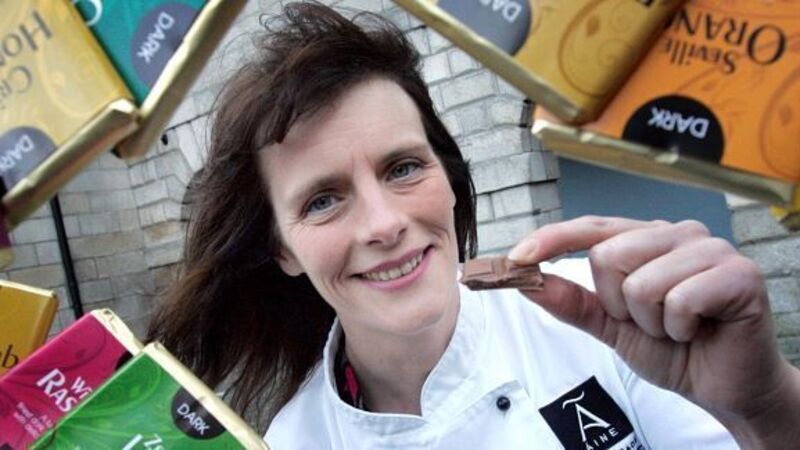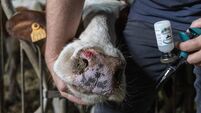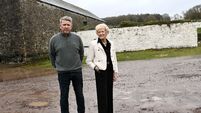Sweet taste of success for Ann

We’ve longed for it as youngsters, carried sticky melting squares around in dusty pockets in an attempt to make it last, and savoured its melt-in-the-mouth deliciousness.
Chocolates, in elaborately trimmed boxes, are the ubiquitous gift to mothers, lovers or would-be lovers, and sales rocket on Valentine’s Day and at Easter.
Chocolate’s obvious association with fertility is fascinating and long-standing, and for marketing purposes, seems to revolve around solitary glamorous women lounging on satin couches.
The fact that most of these women look as if they’ve never eaten a piece of chocolate in their lives — let alone grazed on an entire bar — doesn’t seem to spoil the illusion.
The history of chocolate began in Central America, some 1,900 years ago. To the Mayan culture, the cocoa pod symbolised life and fertility, a belief that seems to be mirrored in our own culture today.
Stones from their palaces and temples reveal many carved images of cocoa pods.
Chocolate played a special role in Mayan and Aztec religious events.
Priests presented cocoa beans as offerings to the gods, and served cocoa drinks during sacred ceremonies.
Preparations of these drinks involved grinding the beans to a powder.
During the grinding, other ingredients such as seeds, corn and chillies were added. The resulting powder was mixed with cold water and stirred with a spoon until foam arose by airing the mixture.
Sometimes, cocoa was prepared as a porridge to which maize and chillies were added.
Europeans, notably the Spaniard, Hernan Cortes, who conquered a part of Mexico in 1519, induced the Spanish court to try this new beverage, sweetened with sugar, vanilla or nutmeg.
The resulting concoction became fashionable, reserved for the Spanish nobility and, coincidentally, it created a demand for the produce of the wily Cortes’s new cocoa plantation.
For several hundred years, the chocolate-making process didn’t change, although by the time of the Industrial Revolution, the chocolate craze had spread like wildfire across Europe.
Chocolate houses became the place to be seen in 17th century London and Paris. The French Court embraced chocolate wholeheartedly. Chocolate’s reputation as an aphrodisiac flourished, and art and literature was full of erotic imagery said to have been inspired by consuming chocolate.
By 1730, a new steam engine had mechanised the cocoa-grinding process and later, the cocoa press was invented.
Briton John Cadbury went on to develop an emulsification process to make solid chocolate, creating the modern chocolate bar.
Today, of course, our taste for chocolate has become increasingly sophisticated. Chocolate is available in a bewildering variety of flavours, and dark chocolate is increasingly popular.
Although we no longer have chocolate houses, perhaps we should imagine the kind of menu such an establishment might offer… strawberries dipped in the best chocolate, chocolate croissants, muffins and small squares of chocolate to sample, to say nothing of delicious mugs of hot chocolate with a choice of toppings.
It’s not at all difficult to wax lyrical about chocolate, as Co Cavan woman, and master chocolatier, Ann Rudden knows.
She told me about her passion for quality chocolate, and how she started her own Aine brand.
I started my company in 1999. But I always wanted to be an entrepreneur, ever since I was about nine.
I decided then that I would have my own business. I taught myself how to bake cakes, and I remember calling up a local woman who had a bakery and asking her if I made a cake would she show me how to decorate it. And she did.
I was just determined, and I was always very independent, determined to do my own thing.
Eventually, I got a job at her bakery on the night shift, making brown bread and apple pies.
It was hard work, but I loved it.”
I went to Kevin Street College in Dublin, and I studied bread cakes and chocolate.
But that was about the time that the bread and cake industry was becoming a lot more mechanised, mass-produced, and I realised that I didn’t really want to do that. And at that time, chocolate wasn’t really something that people in Ireland thought that much about.
I could see the chance to develop an high quality product that had a rigorous focus on quality ingredients and which were presented beautifully.”
I worked in Meath at first. But at the time the lease was up, the recession had just started, and I wasn’t long married.
My husband and I decided we’d go to my home-place in Stradone, population 60.
And by curious coincidence, I ended up buying derelict premises that had been a garage my father had worked in years before.
It was a lot of work clearing the place out, getting it up and running.
And getting a bank loan for a woman was and still is difficult, and I was starting out with nothing.
By then, I’d had my first child, so there was a lot of juggling going on.
Now I have four children.
But back then, eventually and with the help of the Enterprise Board, I managed to get the business going.
And today, Aine’s Handmade Chocolate has nine employees, and we are sold all over Ireland, and in China and Russia too.”
That’s right. We have steadily built up a reputation, but then, I’m in it for the long haul.
I’m passionate about what I do, and I absolutely won’t compromise on quality.
All our products are gluten- free and contain no hydrogenated fats.
Our range includes boxed chocolates, wedding chocolates, sugar-free chocolates, hot chocolate, chocolate sauces for cooking, and more. We pride ourselves on producing the chocolate lover’s chocolate.
I’m sure there are easier, more cost-effective ways of doing things, but they just don’t interest me.”
Like many of us today, the Aztecs believed that chocolate was heavenly. and attributed the creation of the cocoa plant to their God Quetzalcoatl, who they believed had descended from heaven on the beam of a morning star, carrying a cocoa tree stolen from paradise.
When they traded with the Mayans and other peoples for cocoa, they often required that citizens and conquered people pay their tribute in cocoa seeds, a form of Aztec currency.
Cocoa beans were commonly used in trade.
One Hernando Valdez, a Spanish adventurer, reported that he had bought a slave for 100 cocoa beans.
In his letter to the Spanish Court of 1513, he wrote that 10 cocoa beans bought the services of a prostitute, and for four cocoa beans, you might purchase a fine rabbit for your dinner.
Spain held sway over the chocolate market until the 1900s, when Switzerland began to take a leadership role, thanks to Rudolph Lindt of Berne who had invented a new process of refining that resulted in that essential melt-in-the-mouth quality.









